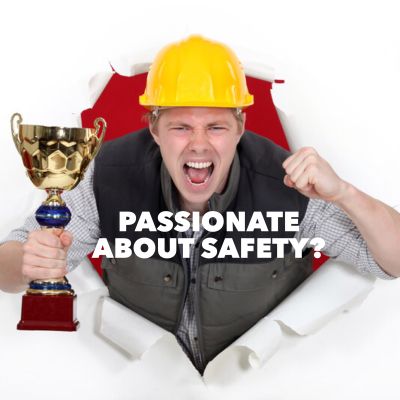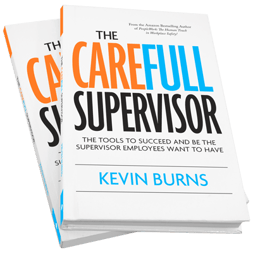If you want to be passionate about safety, first be passionate about people.
 Successful workplace safety culture lies in the relationship between the frontline employee, the employee’s immediate supervisor, and the bond among the entire crew. No senior level initiatives, safety department compliance measures, or culture improvement ideas can have positive results if the frontline supervisor hasn’t established real working relationships. The supervisor needs to be a tipping point between safety compliance and safety success.
Successful workplace safety culture lies in the relationship between the frontline employee, the employee’s immediate supervisor, and the bond among the entire crew. No senior level initiatives, safety department compliance measures, or culture improvement ideas can have positive results if the frontline supervisor hasn’t established real working relationships. The supervisor needs to be a tipping point between safety compliance and safety success.
Supervisors are uniquely positioned to bring workplace safety past compliance and across the threshold to where safety is personal. When trust and respect are embraced by frontline supervisors, their ability to personally influence frontline employees is deeply improved.
All the certified safety officers, VPs, and safety managers in the world can’t have the impact on safety of a single supervisor and a solid crew. If that supervisor and that frontline crew are all passionate about looking out for each other, caring about their co-workers and respecting them, they will be passionate about doing the right things.
Are you clear on what you're passionate about?
This is very different than being passionate about safety. Many a safety person espouse their passion for safety. But that passion may be interpreted as passion for safety rules and procedures. The more important question is, do you have a passion for the people you work with? The answer to that will drive how you communicate with, manage, motivate and engage employees.
A rules-based approach to management doesn’t have the reach of smart coaching and mentoring for ensuring safety. Quoting the rule book, finding fault, and barking orders isn’t leadership. It isn’t even good management.
The more you think about workplace safety, what you will begin to see clearly is that the relationship between a frontline supervisor and a frontline employee is critical to the health and safety of an organization. It’s where the culture of an organization is made and reinforced. Organizations thrive at the level of teamwork, camaraderie, solid work ethic and values. A good supervisor will keep a team together, while a poor supervisor will turn over staff. We all know people who’ve left jobs because of a lousy boss, even at good companies.
How we fail our supervisors.
The fact is that most frontline supervisors ascend to their positions by being the most senior guy on the job. They don’t have any particular management or supervisory skills, yet they’re the ones in charge on site. They’re the ones who are supposed to keep the team together, keep them motivated and focused, make the right decisions, keep their crews safe.
To get safety right, they need to be armed with more than just a rule book of procedures. No one wants a safety cop looking over their shoulder while they work. Supervisors need the personal skills to become centers of influence. They need to be thinking, “What can I bring to the job that helps the new guy from getting hurt or getting others hurt? What can I do to help him improve?” They need to have passion for bringing out the best in employees. They have to want to make their co-workers and workplace better overall.
Make someone proud of where they work and they will tend to not want to disappoint. Besides, when you are proud of where you work and the work you do, you tend to be proud of how you do it. There is no way to sustain high-quality performance by employing low-quality safety.
Engagement and safety are directly connected.
Gallup polls regularly show that the rate of employees not actively engaged in their work hovers around 70 percent. If you are not actively engaged in your work, are you actively engaged in safely doing your work or following safety procedures? Not likely.
 It’s commendable when anyone has a passion for safety. But more important is having a passion for developing people to become better performers. More important is wanting employees to engage in their work and to be proud of the quality they produce. More important is helping others to see the value of looking out for each other on the job; to build a community that we can be proud of. And while safety people can remind us of rules and procedures, safety leaders go a few levels deeper by helping people to just be better people.
It’s commendable when anyone has a passion for safety. But more important is having a passion for developing people to become better performers. More important is wanting employees to engage in their work and to be proud of the quality they produce. More important is helping others to see the value of looking out for each other on the job; to build a community that we can be proud of. And while safety people can remind us of rules and procedures, safety leaders go a few levels deeper by helping people to just be better people.
A safety leader takes safety beyond compliance to a shared goal that recognizes the importance of each individual on the job. Ultimately, past all the processes and procedures are people. Safety resides in the value we place on individuals and the interaction of teams. It’s about how we connect and interact on the worksite, how we communicate, and the value we place on each other. Safety starts with people. So if you want to be passionate about safety, first be passionate about people. And let your passion for safety come from there.
Kevin Burns helps organizations integrate caring for and valuing employees through their safety programs. In addition to working with and faciltating discussions between all levels of management and supervisory, Kevin can also give engaging, entertaining and inspiring presentations to front-line employees at safety meetings. Kevin Burns is a management consultant, safety leadership speaker and author of 9 books. He is based in Calgary, Canada.
©2016 ZeroSpeak Corporation and Kevin Burns.
No part of this post may be reproduced without the expressed consent of the author.


